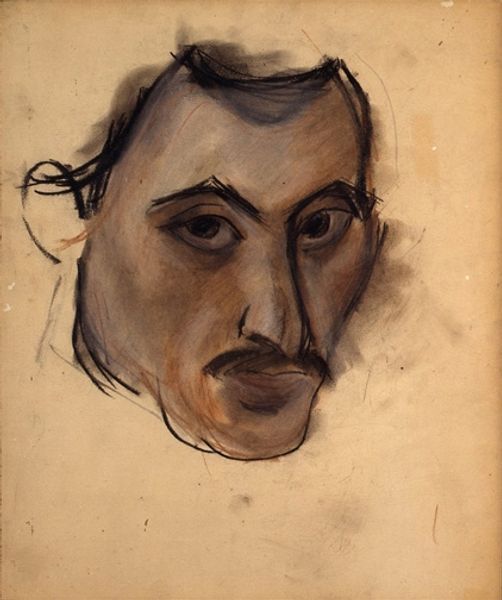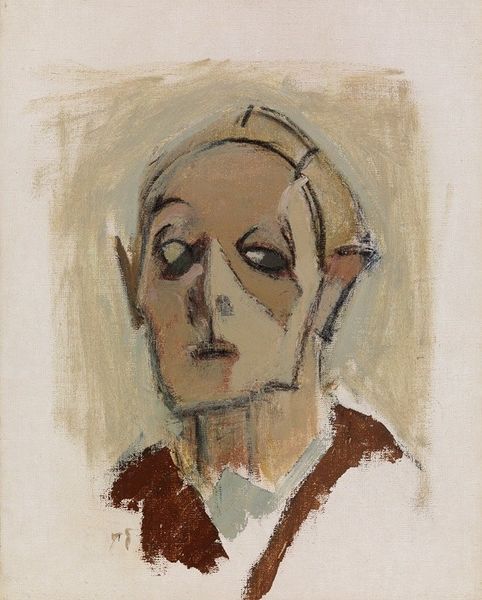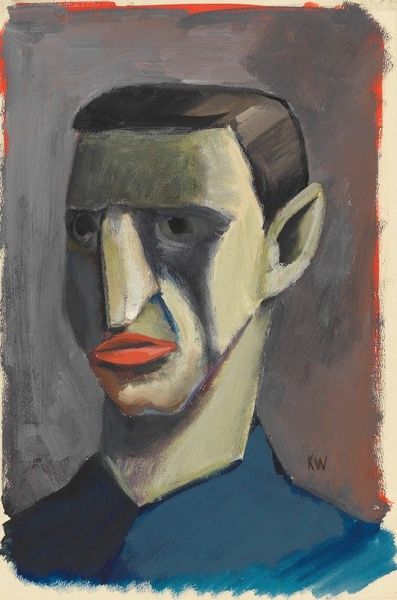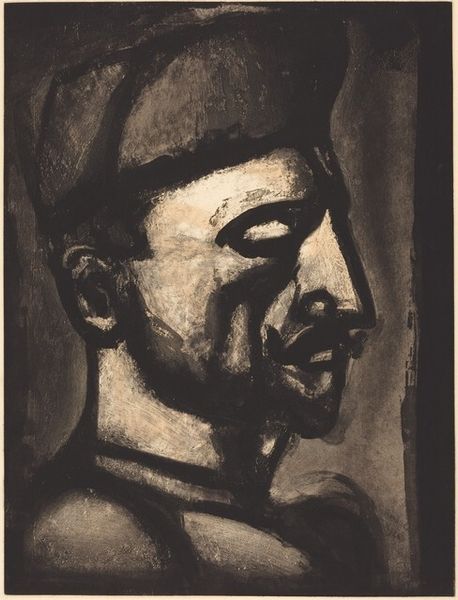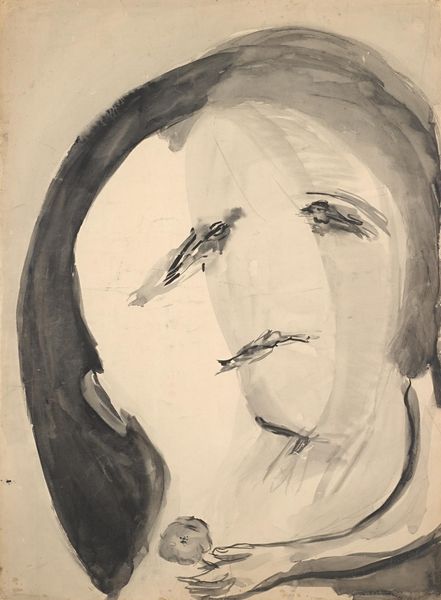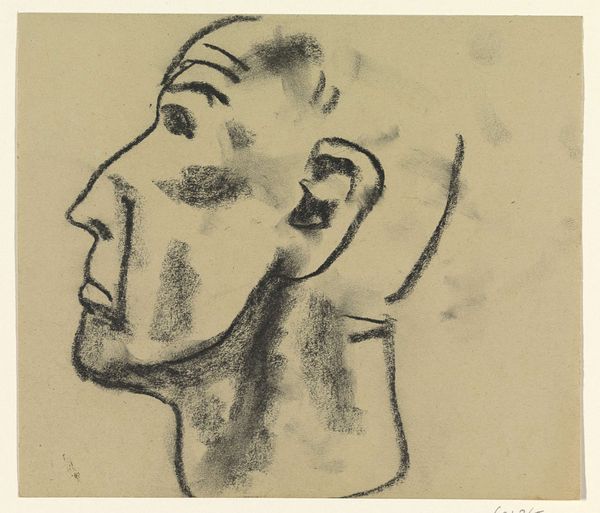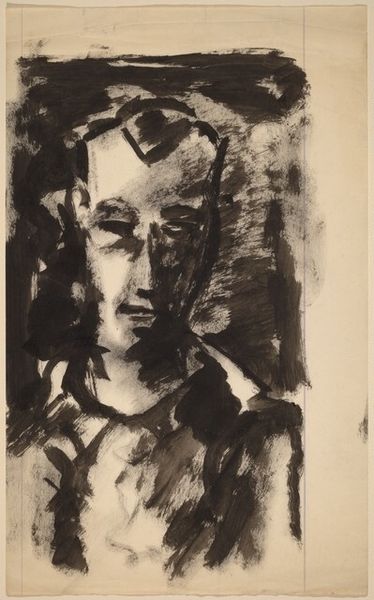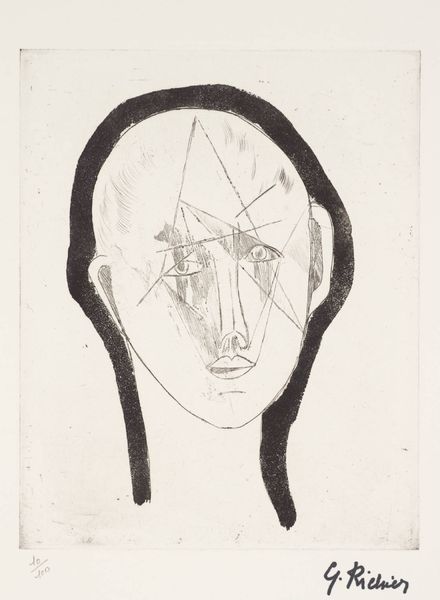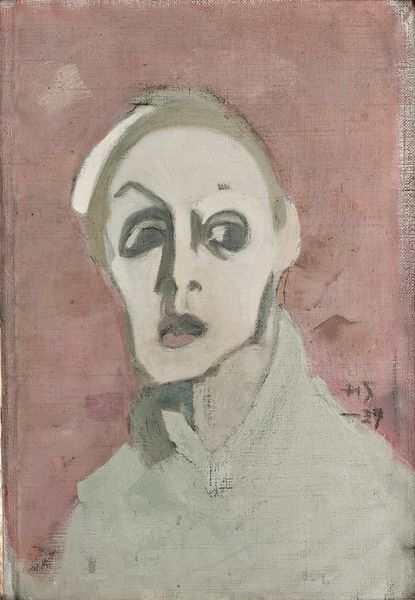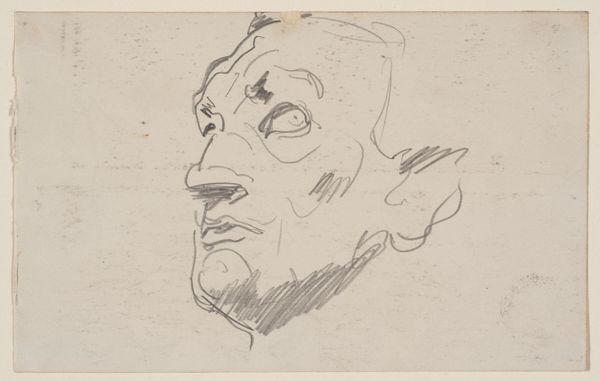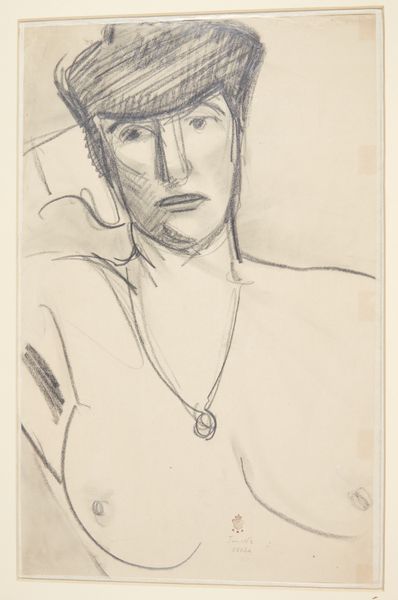
drawing, watercolor
#
portrait
#
drawing
#
watercolor
#
intimism
Copyright: Public Domain: Artvee
Curator: Here we have Helene Schjerfbeck's "The Fencer," rendered in watercolor and drawing. What do you make of it? Editor: Stark and haunting. The muted tones amplify the intensity of his gaze. There's an unfinished quality that feels very modern. Curator: Schjerfbeck was fascinated by everyday life and focused largely on the domestic sphere and portraiture. But she always looked past simple representation. I'm drawn to the intimacy and, perhaps, isolation portrayed here. There’s something very modern in its making as well. Editor: Yes, look at the deliberate roughness of the application. See the exposed paper in areas. The artist leaves the trace of labor, both inviting the viewer to share the experience of how art is created and breaking down conventional categories like ‘finished’ and ‘unfinished’ work. Curator: And notice how the sketchy lines almost define his personality rather than just his face. The heavy brow suggests concentration or determination, traits that align perfectly with a fencer. Editor: Indeed. I read tension and resolve. There's a striking asymmetry to the planes of his face too; the artist highlights contrast in a way that almost verges on caricature, while it still remains well within the realm of ‘portrait’. Curator: Perhaps what appears to be an informal sketch contains a profound character study. Schjerfbeck elevates her work above traditional formalism precisely because it refuses to fully render details, demanding we consider broader concepts of character and environment. Editor: The lack of specific context makes it relatable; one could consider "the fencer" to be anyone—a performer of physical acts for an audience—while still emphasizing a focus on the internal mindset that makes the artwork especially compelling. Curator: It has certainly given me new perspectives to consider. I'll be thinking about the social aspects of how this artwork was made for a while now. Editor: Yes, it reveals interesting tensions that one may be tempted to flatten out under the totalizing concept of “the portrait”. It is rewarding to consider how it functions in the larger history of image-making.
Comments
No comments
Be the first to comment and join the conversation on the ultimate creative platform.

